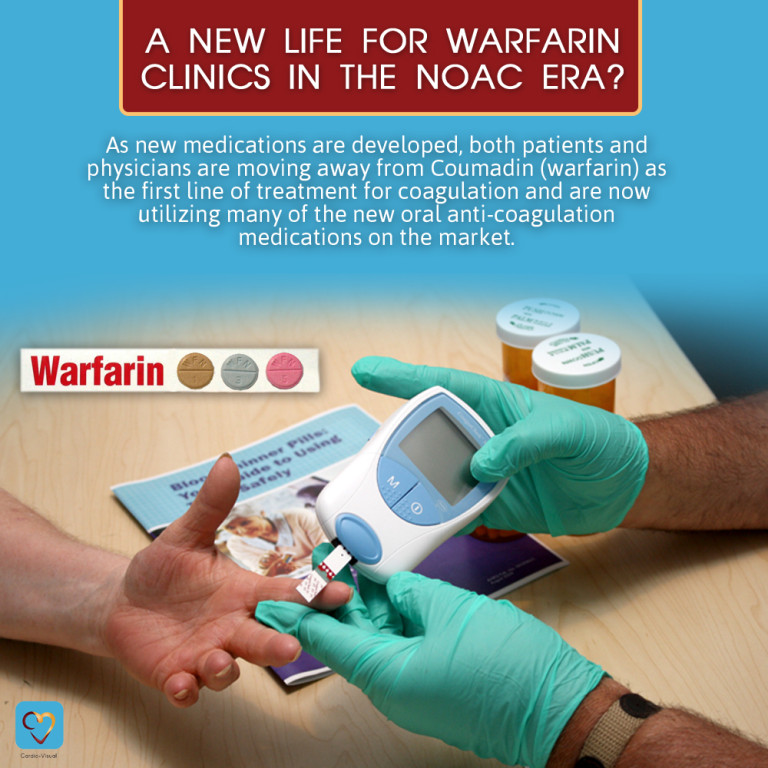
As new medications are developed, both patients and physicians are moving away from Coumadin (warfarin) as the first line of treatment for coagulation and are now utilizing many of the new oral anti-coagulation medications on the market. The novel new anti-coagulation medications provide the necessary protection with the added benefit of not having to alter one’s dietary regimen or exercise extreme caution when using many other medications as you do with Coumadin.
Indeed, for many years, anti-coagulation clinics have been an essential part of out-patient cardiology clinics. These anti-coagulation clinics were necessary to monitor the health of patients taking Coumadin — patients on this drug has to be carefully monitored for chronic conditions such as atrial fibrillation, valve-replacement, and deep vein thrombosis. These specialized Coumadin clinics offer frequent expert and individualized care for patients taking Coumadin.
Do we still need the clinic?
With the availability of the new drugs that require less monitoring, however, the current question in many cardiology clinics now is “What do we do with our Coumadin clinic, now that so many patients are on medications that do not require the same degree of monitoring?”
In “A New Life for Warfarin Clinics in the NOAC Era,” Dr. Gordon Tomaselli suggests that clinics can repurpose the specialized Coumadin clinics to provide individual, frequent, and expert care to even more patients. As a nurse manager, I agree with Dr. Tomaselli’s suggestions, as utilizing staff efficiently is one of my No. 1 concerns. How do we make these clinics work as efficiently as possible while utilizing staff, equipment, and time appropriately?
I love the idea of expanding the existing Coumadin clinic setting into not only a specialized clinic for patients taking anti-coagulants but also utilizing these resources to treat and monitor patients with other chronic conditions that require frequent care and observation, such as heart-failure patients, valve-replacement or pending-replacement patients, patients with severe peripheral arterial disease, and high-risk patients with coronary disease. These specialized clinics can be transformed into areas where patients can be given guidance on medication management, education of their disease process, and other individualized attention that helps ensure adherence to their medication and treatment regimen, and offers appropriate instruction prior to any hospital procedures that require medication titration.
A special area for patient education
Developing a specific and specialized area will yield an ideal setting for educating patients. I have found that both patients and providers are more satisfied when physicians can spend more time and give more attention to patients. CardioVisual, too, facilitates this all-important patient-provider interaction. The app enables healthcare professionals to review disease processes with patients and their families. Beautiful videos explain why anti-coagulants are a necessary part of atrial fibrillation management to prevent stroke. Other videos that could be used in such a setting include heart failure, TAVR, understanding PAD and many more.
As a healthcare professional, my chief concern is the health and well-being of my patients. Expanding the scope of former Coumadin clinics is one way I can ensure my patients are well-educated about their health, and utilizing CardioVisual in my daily practice is another.